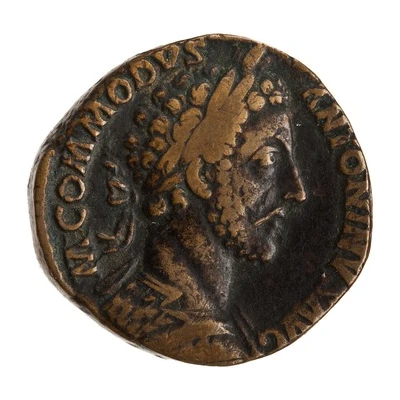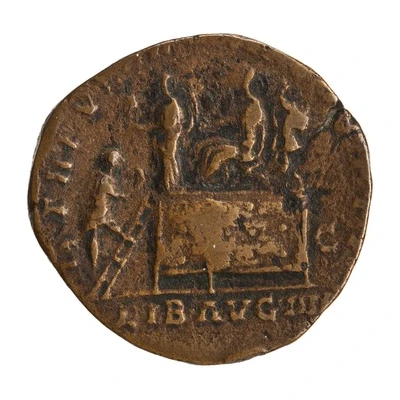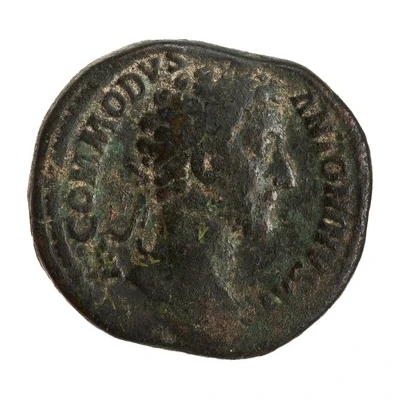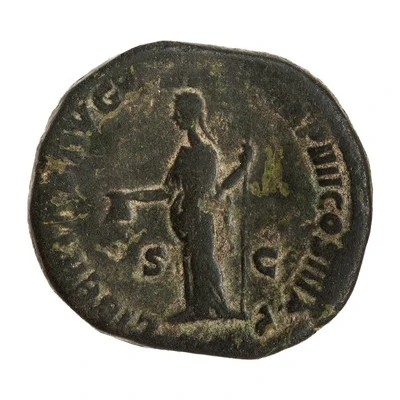


© American Numismatic Society (ANS)
Sestertius - Commodus LIB AVG IIII TR P VI IMP IIII COS III P P S C; Liberalitas
181 year| Bronze | 22 g | 29 mm |
| Issuer | Rome › Roman Empire (27 BC - 395 AD) |
|---|---|
| Emperor | Commodus (Lucius Aurelius Commodus) (177-192) |
| Type | Standard circulation coin |
| Year | 181 |
| Value | 1 Sestertius = ¼ Denarius |
| Currency | Denarius, Reform of Augustus (27 BC – AD 215) |
| Composition | Bronze |
| Weight | 22 g |
| Diameter | 29 mm |
| Shape | Round (irregular) |
| Technique | Hammered |
| Demonetized | Yes |
| Updated | 2024-10-06 |
| Numista | N#265614 |
|---|---|
| Rarity index | 100% |
Reverse
Commodus, togate, seated left on curule chair on platform, attended by an officer; before him, Liberalitas, draped, standing left, holding tessera in right hand and corncuopiae in left hand; at left, citizen mounting right steps of platform.
Script: Latin
Lettering: LIB AVG IIII TR P VI IMP IIII COS III P P S C
Translation:
Liberalitas Augusti Quarta, Tribunicia Potestate Sexta, Imperator Quartum, Consul Tertium, Pater Patriae. Senatus Consultum.
The fourth liberality of the emperor (Augustus), holder of tribunician power for the sixth time, supreme commander (Imperator) for the fourth time, consul for the third time, father of the nation. Decree of the senate.
Comment
Example of this type:American Numismatic Society (ANS)
Source:
Online Coins of the Roman Empire (OCRE)
Interesting fact
One interesting fact about this coin is that it features an image of Commodus, who was known for his extravagance and excesses during his reign. Despite his controversial reputation, he was still remembered as a benevolent ruler who was loved by the people, as evidenced by the title "Liberalitas" on the coin, which translates to "generosity" or "liberality." This coin serves as a reminder of the complexities of historical figures and the multiple perspectives that exist when evaluating their legacies.

